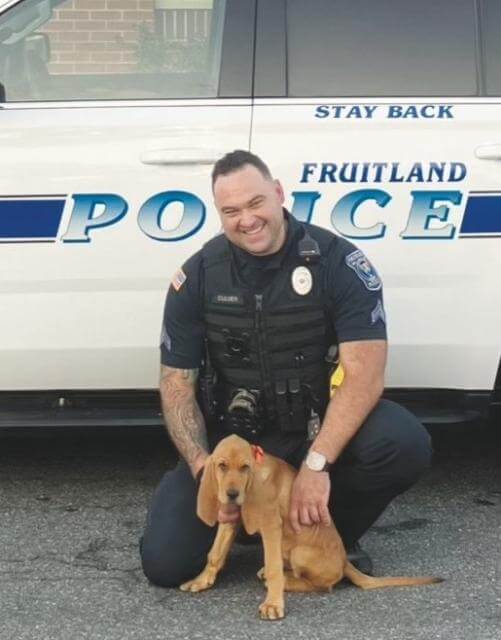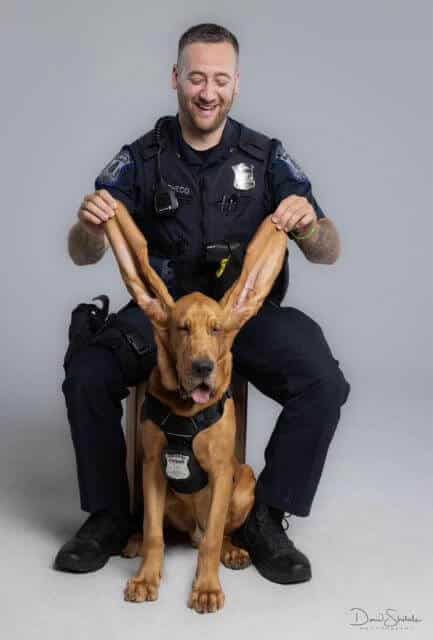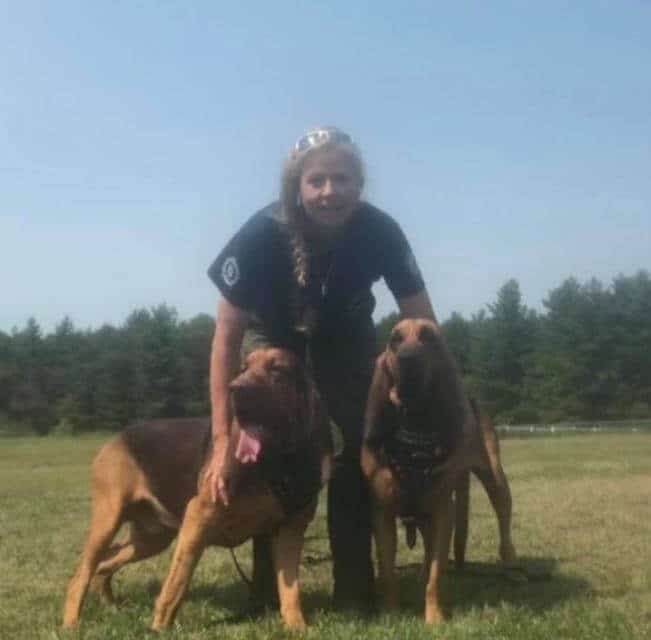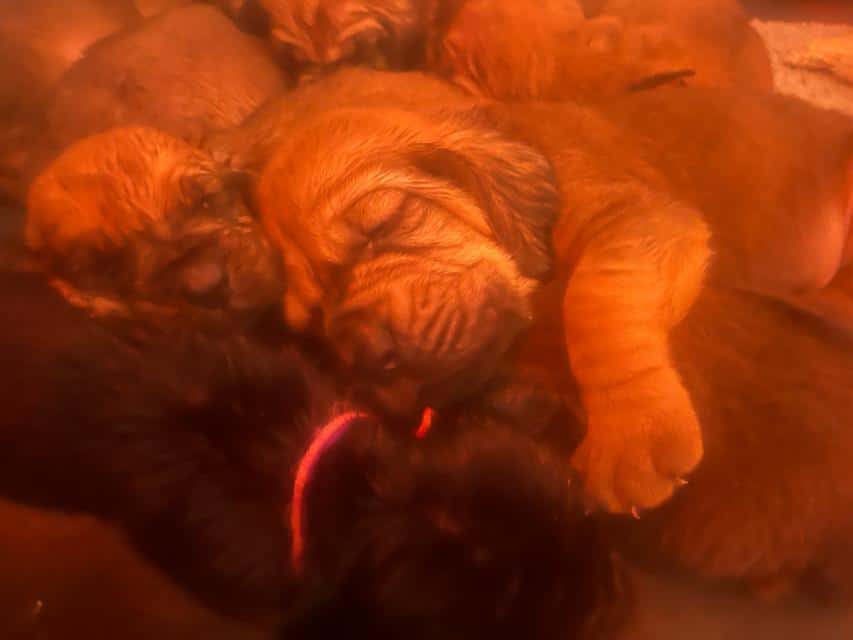


Home » A Day in the Life of a Tracking Dog

We’ve all seen it on TV—the droopy-eared Bloodhound that saves the day when he finds the missing child in the woods or the fearsome criminal who always seems to get away. But who are these “mantrailing” dogs in actuality and what goes into making them the incredible canines they are? Well, it goes far beyond what is seen in cinema.

Mantrailing is formally described as an activity where a dog locates a missing or hiding individual by following a scent trail. Using a scent article, such as a piece of clothing, the dog locates and follows the person’s unique scent until their whereabouts are discovered.
This scent-specific pursuit is something that Judy Braun of Bluegrass Bloodhounds knows well from experience. She has created a legacy as the industry’s leading producer of Search and Rescue dogs, and more, in the breed. Her Bloodhounds have won multiple awards, including the 2022 Trailing Dog of the Year, 2023 Trailing Dog of the Year, and the 2024 Hero Dog Award.
“It takes a lot of food, patience, and energy,” Judy says. “As a trainer, you want to embrace the dog’s natural hunting instincts. They instinctively hunt for food, so you want to start with that and move to praise or a toy reward.” She says that the trainers start by showing a young dog a high-value reward, followed by running away a short distance. Once the dog arrives at the end of that distance, it receives the reward and a great deal of praise to let it know that it has accomplished its “mission.”

The training process continues with much expansion before a dog is deployed. And what goes into the process of selecting which dogs can participate in this type of work is a process in itself. Not every hound or German Shepherd is cut out for the job, which can be very specialized—and intensive.
“Any breeding prospects’ lines have been observed and evaluated for years before being brought into our breeding program,” Judy explains. “Each dog is different in drive and ability. Because not every person can physically handle a high-drive dog, a manageable bloodline is the safest route as a working breeder; however, most law enforcement prefer high-intensity dogs.”
Not all dogs are created equal, either. Mantrailing dogs are very different from each other. They all have a purpose, though each has its own individual benefits and drawbacks.

“A high-drive dog may overlook evidence as they drag you to their quarry,” notes Judy. “A methodical dog may indicate more effectively on evidence and be better suited for detection work as well as being better suited for a larger urban environment like Los Angeles or Miami (both of which we have Bloodhounds at).” As an experienced breeder, trainer, and handler, Judy has a firm grasp on what she looks for in her own dogs, better known as her canine “partners.” But what works for one department or one handler can be totally different for another. Not every mantrailing dog will suit everyone.
“A pup going to the Los Angeles Police Department or Miami PD will need to stay closer to the actual foot track than a dog in a rural community, which would have more room to explore the potential area for scent,” she acknowledges. Judy begins testing at three weeks with the Scent Test, and then at 49 days the pups have their Puppy Aptitude Test, when the breeder identifies and records a number of different and unique observations.
“As a mantrailing Bloodhound breeder, I want to see independence, problem-solving, resilience, and prey drive,” she explains. “I don’t want to see temperamental or environmental issues. As a young pup, we expose them to noises and textures to help condition them to their future duty station.”
While Bloodhounds are seen as the classic trailing and tracking dogs, especially when it comes to the big screen, there are a number of breeds, ranging from the popular to the rather obscure, that can do the job and do it very well. In fact, individuals of almost any breed have a chance to succeed in these activities, though some are more traditional and better inclined than others.

“Any dog can man-trail or man-track,” Judy says. “The primary breeds used for it in Search and Rescue are the Bloodhounds, German Shepherds, Belgian Malinois, and Labradors. I’ve seen Dachshunds and Basset Hounds do very well at trailing as well.”
If there is anything these dogs—and all canines, from companions to working dogs—have in common, it is that they have a much more sophisticated sense of smell than humans.
“The canine olfactory system is an incredibly advanced and sophisticated system that allows canines to detect and follow scents that are imperceptible to humans,” Judy notes. “Canine noses can have over 300 million olfactory receptors, which are responsible for detecting and interpreting scent molecules. This is in contrast to the five million olfactory receptors that humans have. The olfactory receptors are located in a specialized area of the canine’s nasal cavity known as the olfactory epithelium, which is coated with mucus.”
There are a number of events and activities designed to put that incredible skill to work, from Tracking, Scentwork, and Search and Rescue to Hunting, Cadaver Work, and more. Opportunities abound for even the layperson today thanks to an astonishing array of competitive and success-focused dog sports.
If scent-based activities sound intriguing, you and your dog can get started today. To begin, connect with your local kennel club to locate training spaces and find out about scheduled events. Your unique journey in Scentwork will definitely take you places, whether for fun or something more exciting—like finding missing persons or making it onto the silver screen.
